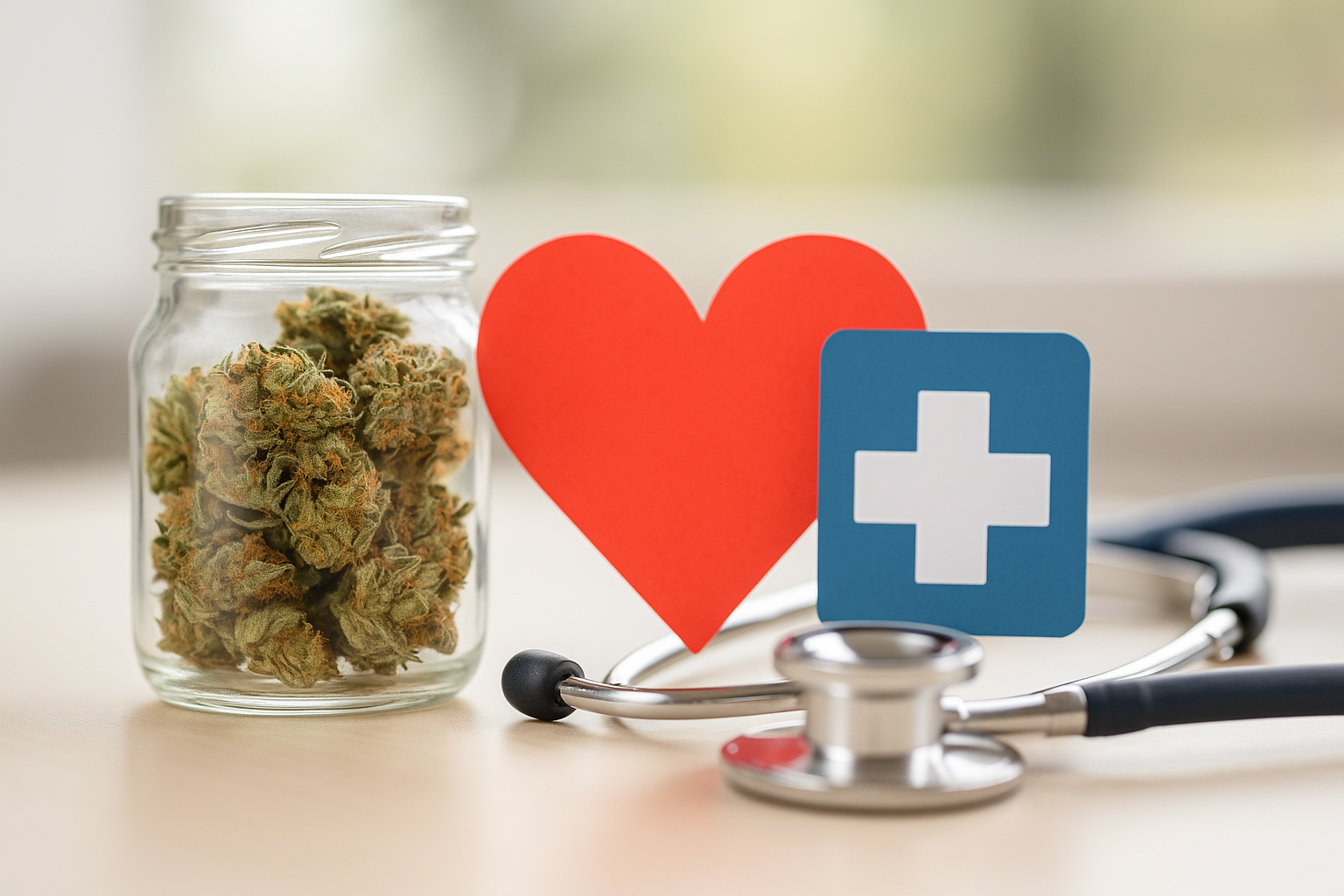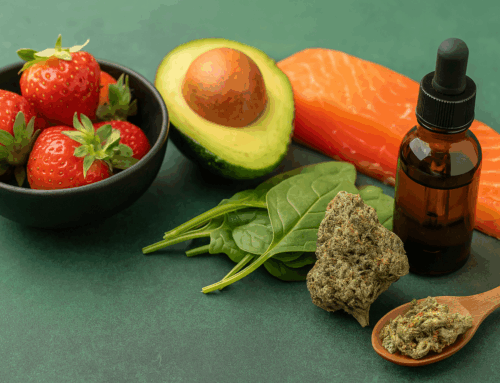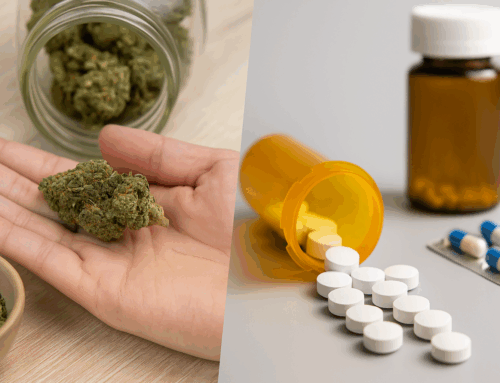Every year, millions of people endure chronic pain. This pain, needless to say, requires attention and resources, especially when chronic pain leads to primary care and ER visits. Such visits consume valuable time for medical staff and waste resources, both for patients and healthcare systems.
With cannabis slowly gaining acceptance within the medical community, pain patients now have new possibilities to control their symptoms better, sleep better, and avoid “in crisis, go to the ER” night plans. Cannabis patients have been shown to have fewer flare-ups, better function, and, in some programs, marked reduction of primary care and emergency department visits.
Why healthcare utilization matters
High healthcare utilization – that is, frequent primary care and emergency department visits – is indicative that pain management is inadequate. With pain, patients seek less emergency care and, in turn, the department becomes less crowded. That is a win for everyone. If a given treatment allows patients to avoid all the “go to the ER” plans, it is worth studying.
What patients say they gain
With Charge and others, Cannabis patients have less chronic pain, better sleep, and better mental well-being on average. We have learned that access to treatment allows patients to describe their gains in 3 ways:
- The ability to participate in daily activities without the burden of pain.
- Sleep that is restorative, reducing pain intensity and mental stress.
- Improved quality of life as illustrated by reduced ‘unwell’ days per month.
With chronic symptoms, people have migrated to schedule their follow-ups and avoid ‘in crisis, go to the ER’ plans, and that alone is a win for the healthcare system.
Improved outcomes: the impact of legalization and access
Legalization derives its importance from the trained professionals who deal with reliable goods and appropriately documented goods. It also comes with conversations that adjust the diagnostics and therapeutics of cannabis with dosing, more probable drug interactions, and goal setting on the use of cannabis, and, in the end, balancing the possible adverse effects. This assures patient care in the course of treatment with cannabis, so that the safety and compliance with the therapy are ensured to gain the intended advantage of the treatment.
How cannabis may reduce urgent care and ED visits
Several mechanisms can help explain the reduced urgent care visits for patients on medical cannabis.
- Baseline Pain control: Patients on medical cannabis are likely to have a lower average pain.
- Sleep: Improved sleep helps reduce pain, stabilize mood, and improve tolerance.
- Anxiety management: So, some calmer days help.
- Rehabilitation: The combined gains increase with rest, physical therapy, and pacing.
The less likely patients are to need urgent help, the more manageable the day-to-day aspects of life become.
Evidence so far (and what “study suggests” really means)
The earliest studies and a clinic cohort study using cannabis showed meaningful trends, including self-reported lower pain scores, better functional status, and a reduction in opioid prescription fillings. These studies suggest that using cannabis, patients used less urgent care and ED services. These data are primarily observational, which are essential, yet they are not the final answer. Nonetheless, they are consistent with the clinical experiences of practitioners.
Patients with prior cannabis use experience better integration with lower tolerance and cannabis side effects. Over time, those behaviors are more likely to erode crisis moments.
Picking formats and doses (Simple)
- Fast relief (minutes): Some inhaled forms may relieve and cover sudden spikes, but their duration is shorter.
- Longer relief (hours): oils, capsules, and edibles offer lower doses and steadier coverage.
- Topicals: Topicals are helpful for specific areas with much less systemic side effects.
- Balance: Many people use CBD for clarity and, at night, shift to small doses of active THC.
In one day, record the amount of symptoms, steps taken, sleep, and pain, and discuss the results with the caregiver to target the root problems.
Considerations for the elderly
Managing chronic arthritis, spinal pain, and nerve pain is easier as people get older when combined with other medications. It’s essential to have medical supervision to reduce the use of potent sedatives and opioids. Start treatment with lower doses of THC and higher doses of CBD.
Cancer oils and capsules simplify dosing considerably. Remember to inform your pharmaceutical specialist of any potential interactions with other medications and regularly assess your cognitive, reflexive, and postural functions. This advice aims to keep you in your best possible condition. Distracted driving and any activities that require full attention should be avoided if you have problems focusing for more than half an hour.
Dizziness is familiar with this treatment, and avoid alcohol as it can increase dehydration. Driving under these conditions is illegal. Check your country’s marijuana laws to see if you can get a medical marijuana card.
System-level benefits for healthcare systems
Improvements in pain management at the patient level lead to system-level benefits for healthcare systems.
- Fewer urgent care and ED visits lead to the alleviation of the crowding in the ER.
- Less repeat imaging and procedures.
- Better compliance with follow-up rehabilitation programs.
- Better adherence to scheduled follow-up care combined with scheduled pain management results in reduced use of repeat imaging and procedures.
- Resource allocation moves from crisis response to preventative measures.
These are the positive effects of medical cannabis use, but also favorable collateral impacts to the healthcare system stemming from the treatment—an improved ratio of planned to unplanned care.
Where does cannabis stand in the context of contemporary pain management?
No one treatment works for all. However, as an adjunct or stand-alone treatment, cannabis use for chronic pain can, in certain patients, achieve symptom stabilization and reduced opioid use. Success looks something like this: reduced unhealthy days, improved sleep, increased participation in activities, and reduced after-hours care.
Your following appointment action items
Write down the questions:
- How accurately do I fit the provided case description, and does cannabis chronic pain management assist my current regimen and medications?
- What dosages and formulations can be scheduled according to my cognitive and other functional shortfalls?
- What prescriptions can we safely set a tapering regimen for?
- What does success look like, scored via pain, steps taken, sleep, and how many urgent care visits were bypassed?
The doctor will want to see measurable data alongside set goals.
Also, a diary can help you achieve this.
Concerns that still need to be addressed
- Insurance plans vary significantly, raising concerns about price and coverage.
- Some variation exists among products, but improvements in quality control are being made.
- Patients’ history with marijuana is often undisclosed, and social stigma inhibits clinicians’ care.
- More randomized, controlled trials are needed on dosages, chronic use, and all the specific medical conditions.
Less perfect, more positive, a lot more controlled.
The takeaways
Cannabis for chronic pain eases symptoms, enhances sleep, and decreases reliance on urgent care for many people. It has been observed that patients function better, experience a decrease in unhealthy days in a month, and in real-life programs, lower use of prescribed opioids. Legalization with better guidance allows patients to obtain products that are more consistent and supportive and yield better care outcomes. If you are suffering from persistent pain of almost any type, speak with your clinician about the role of cannabis associated with pain, rehab, pacing, and mindful habit formation. In summary, cannabis helps in the avoidance of urgent care and enhances one’s overall presence in life.





